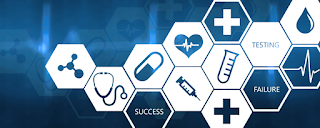Thrombin is a serine protease enzyme encoded by a specific gene named F2 and is used to convert fibrinogen (soluble) into fibrin (insoluble). This conversion mimics the ending coagulation cascade step that includes the clotting mass which sticks to the wound surface and attains hemostasis and closing of open tissues. Human thrombin is a sterile solution, pH 6.8-7.2, comprising highly purified human thrombin for the activation of clotting. Human thrombin is used in several medical surgeries in the management of uncontrolled bleeding. It is also used in diagnostic centers and clinics in various applications such as coagulation assays, defibrination of blood or plasma, and clotting factor tests. R&D applications of human thrombin include several research activities such as protein-structure analysis, in vitro study, coagulation research, biochemical research, and medical research.
The global Human Thrombin Market can be segmented on the basis of product type, dosage form, and end-user. Based on product type, it can be classified into three categories: alpha-thrombin, beta thrombin, and gamma-thrombin. Human alpha-thrombin is prepared from human prothrombin (homogeneous) by activation with Factor Xa, Factor Va, and phospholipid. SDS-PAGE is the preferred purification method. A minimum activity of around 2,200-2,700 NIH units/mg is shown by the activated human thrombin when compared to NIH standard thrombin. On the other hand, human β-thrombin and γ-thrombin are prepared from purified a-thrombin by limited proteolysis with TPCK-treated trypsin.
Purity is measured by SDS-PAGE and activity is calculated using a fibrinogen clotting assay. Based on the dosage form, the global human thrombin market is segmented into solution form, powder form, patch, spray kits and others. On the basis of end-users, it is segmented into hospitals, diagnostic and clinics, ambulatory surgical centers, and academic and research institutes. Among the end-users, the hospital segment is anticipated to lead the market due to increase in the number of surgeries. The rising hemostatic use of thrombin-based products during surgeries has fuelled the demand for thrombin in the hospital segment.
Request to View Brochure of Report -
The global human thrombin market is mainly driven by rising adoption in various research and diagnostic applications. Professionals have also observed a growth in human thrombin uptake, which is attributed to lesser post-operative complications and safer hemostatic condition. Human plasma is the only source for the production of human thrombin; thus, it carries a risk of transmitting infectious agents, such as viruses. Also, the presence of unknown infectious agents is also possible in the human thrombin. This is the major factor hindering the growth of the human thrombin market. In order to avoid such conditions, proper screening of the plasma donors for prior exposure to certain viruses is required.

Comments
Post a Comment